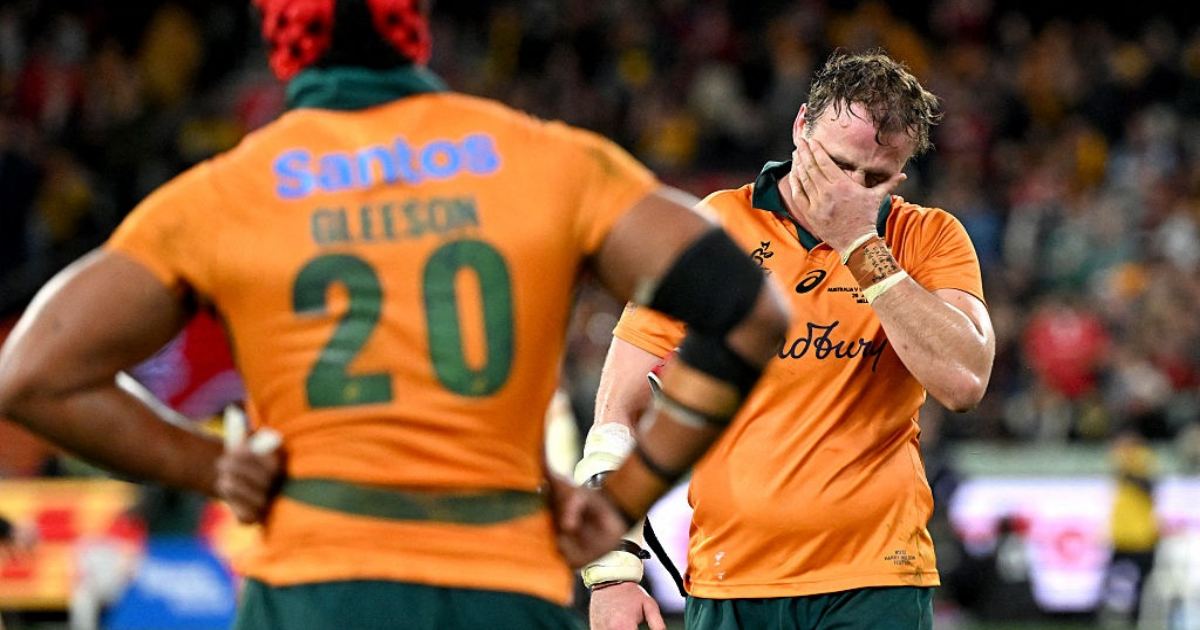mens
british-irish-lions
Australia’s captain Harry Wilson reacts after the second rugby Test match against the British and Irish Lions at the Melbourne Cricket Ground (MCG) on July 26, 2025. (Photo by WILLIAM WEST / AFP) / — IMAGE RESTRICTED TO EDITORIAL USE – STRICTLY NO COMMERCIAL USE (Photo by WILLIAM WEST/AFP via Getty Images)
Former Wallabies captain Michael Hooper has weighed in on Jac Morgan’s controversial clearout on Carlo Tizzano in the lead up to Hugo Keenan’s dramatic, series-clinching try in the dying moments of the second Test in Melbourne.
The British & Irish Lions clinched the series 29-26 in front of over 90,000 fans at the MCG, leading the game for just the final two minutes after the Wallabies – buoyed by the return of Will Skelton and Rob Valetini – took and held control for the vast majority of the contest.
However, the key talking point post-game was a clearout by replacement back-row Morgan, which was reviewed by the match officials but not deemed to warrant a penalty.
Speaking on Stan Sports, Hooper said the clearout was at least a penalty and the final try should have been disallowed as a result.
“I can see what the referee is saying but there’s a penalty there. Whether it’s on head, on neck or going straight off his feet to the ground.
“I would say if that is minute one, that’s a penalty.”
Former Lions captain Martin Johnson disagreed: “I didn’t think there was enough there for a penalty that would change the game,” he said on Nine. “You have to be very, very sure to change the game on a ref’s decision.
“I thought it wasn’t a penalty.”
Speaking after the game, Morgan – the lone surviving Welshman on tour, admitted he was nervous during the TMO review of the ruck.
“I was an engineer six years ago. I decided to give rugby a go. It has worked out all right,” said Morgan. “I was a bit nervous there [waiting on the TMO review], I won’t lie.”
In the post-match press conference, a clearly seething Joe Schmidt, pointed towards World Rugby Law. 9.20, which states, among other things: “a. A player must not charge into a ruck or maul. Charging includes any contact made without binding onto another player in the ruck or maul” and “b. A player must not make contact with an opponent above the line of the shoulders.”
Related
